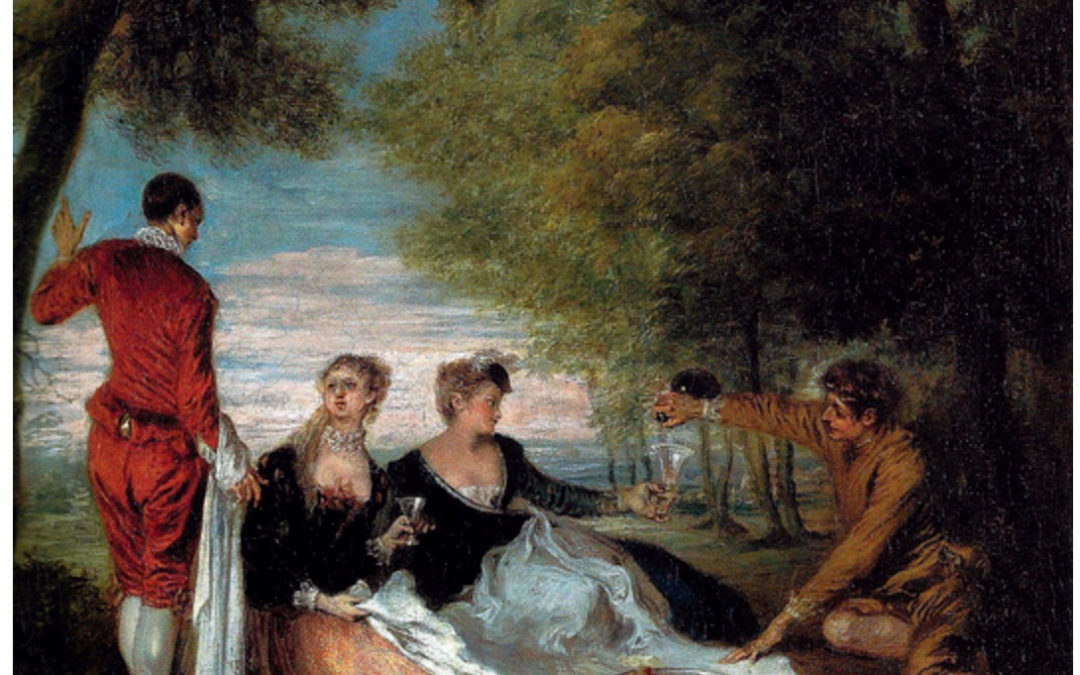 Watteau’s The Collation or Lunch in the Open (1710-1720s c.) is intimate and picnicky. Among his works, it is the most like a déjeuner sur l’herbe, except for his hunt luncheon subjects. As usual, for the French, the subject is not referred to as un...
Watteau’s The Collation or Lunch in the Open (1710-1720s c.) is intimate and picnicky. Among his works, it is the most like a déjeuner sur l’herbe, except for his hunt luncheon subjects. As usual, for the French, the subject is not referred to as un...
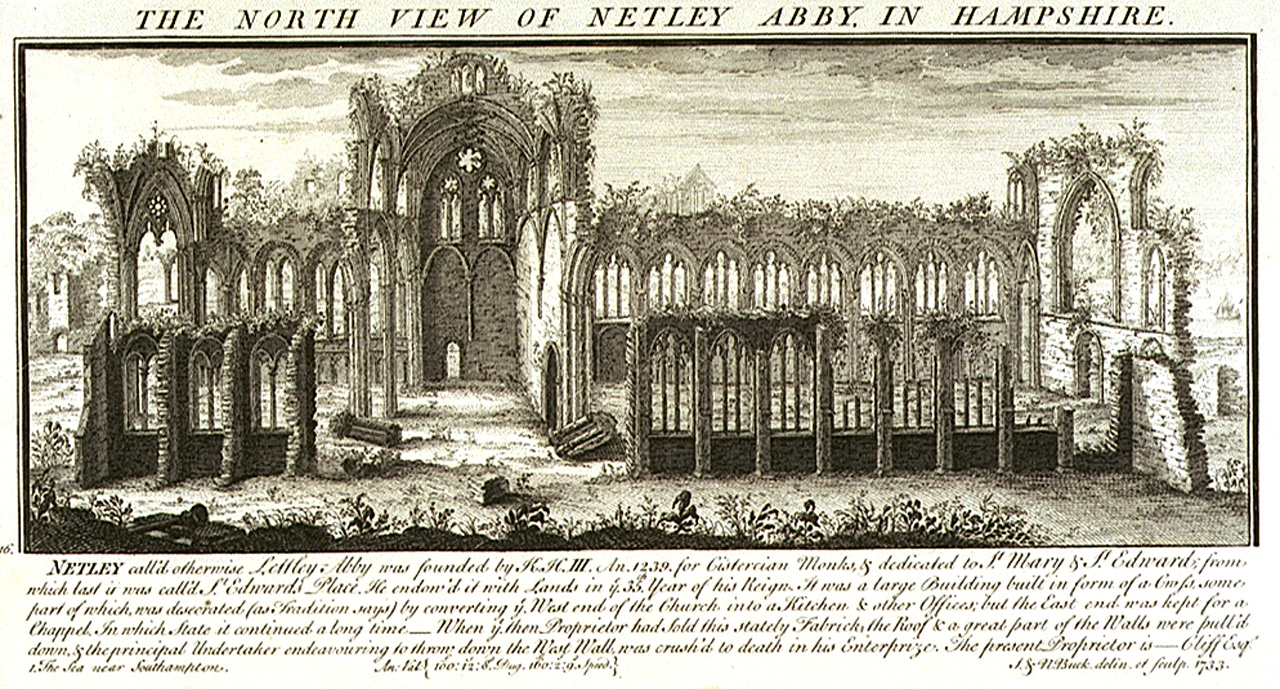 Writing to his dear friend (and probable mistress) Martha Blount, Pope related his adventure at Netley Abbey and his alfresco luncheon there. He does not call it a picnic because the word was not used in English parlance until 1806. (See Harris’s The happy...
Writing to his dear friend (and probable mistress) Martha Blount, Pope related his adventure at Netley Abbey and his alfresco luncheon there. He does not call it a picnic because the word was not used in English parlance until 1806. (See Harris’s The happy...
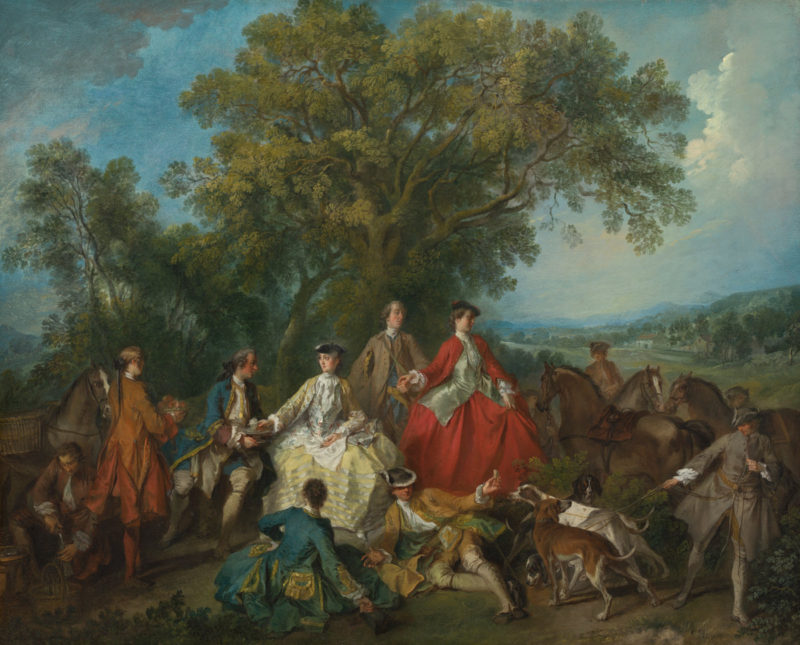 Because the scene is obviously a picnic, the National Gallery of Art’s title, The Picnic after the Hunt, is apt. But Lancret, whose language was French, would not have used pique-nique because it refers to an indoor dinner. More likely, he would have titled un repas...
Because the scene is obviously a picnic, the National Gallery of Art’s title, The Picnic after the Hunt, is apt. But Lancret, whose language was French, would not have used pique-nique because it refers to an indoor dinner. More likely, he would have titled un repas...
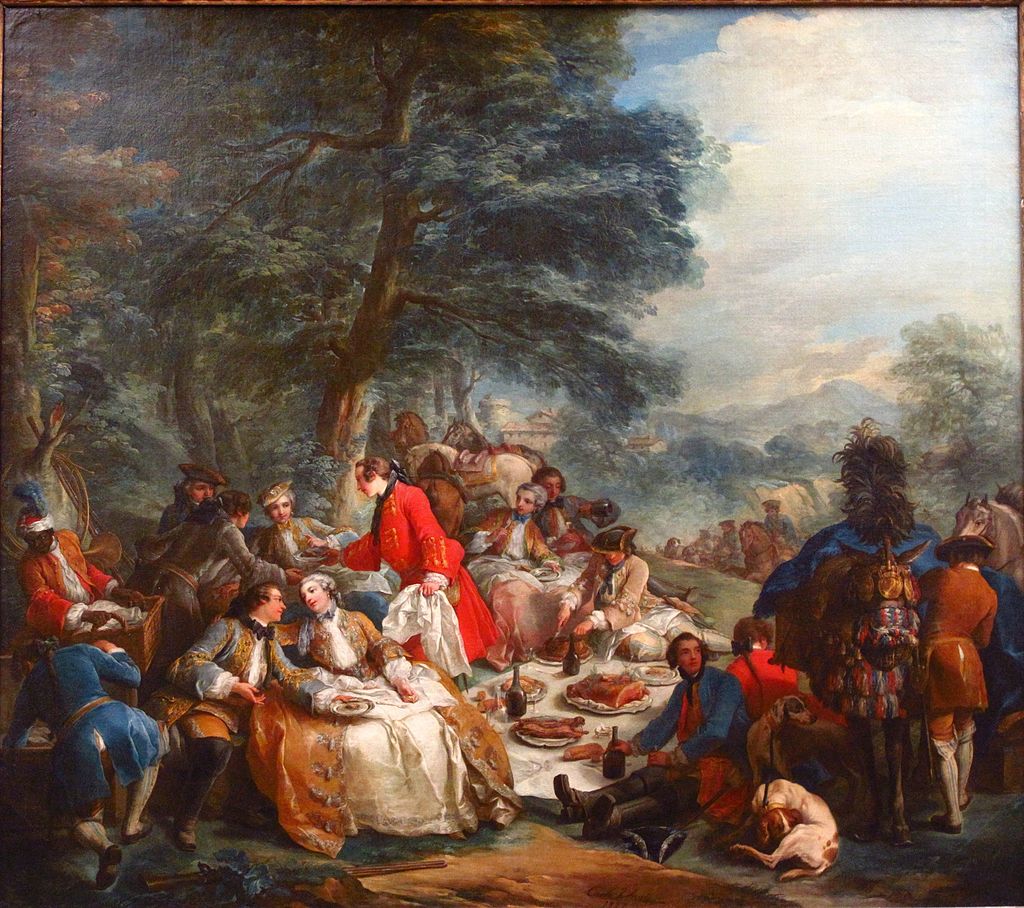 As usual among the French, a halt on the hunt is never referred to as a picnic, although that’s what it is. Van Loo’s Halte de chasse is a narrative of a stop during the hunt, at which the ladies meet the hunters at a predetermined place, called a tryst,...
As usual among the French, a halt on the hunt is never referred to as a picnic, although that’s what it is. Van Loo’s Halte de chasse is a narrative of a stop during the hunt, at which the ladies meet the hunters at a predetermined place, called a tryst,...
 Montagu “ate a cold loaf,” which suggests a synonym for picnicking, a term that has not survived. She wrote the word in her diary for 1752 while visiting a ruined 12th Century priory in Berkshire being remolded as her residence. Emily J. Climenson, editor of Montagu’s...
Montagu “ate a cold loaf,” which suggests a synonym for picnicking, a term that has not survived. She wrote the word in her diary for 1752 while visiting a ruined 12th Century priory in Berkshire being remolded as her residence. Emily J. Climenson, editor of Montagu’s...
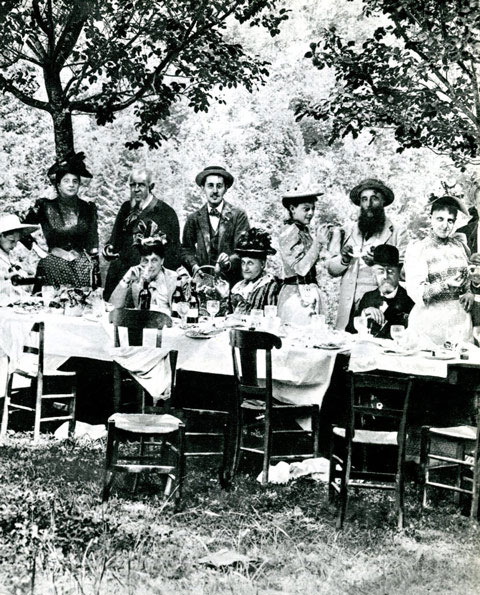 Proust’s Within a Budding Grove [aka In the Shadow of Young Girls in Flower] is sometimes remembered for young Marcel’s picnics on the bluffs at Balbec, a fictional town in Normandy. (Proust does not use pique-nique because this is an outdoor meal.) With a...
Proust’s Within a Budding Grove [aka In the Shadow of Young Girls in Flower] is sometimes remembered for young Marcel’s picnics on the bluffs at Balbec, a fictional town in Normandy. (Proust does not use pique-nique because this is an outdoor meal.) With a...
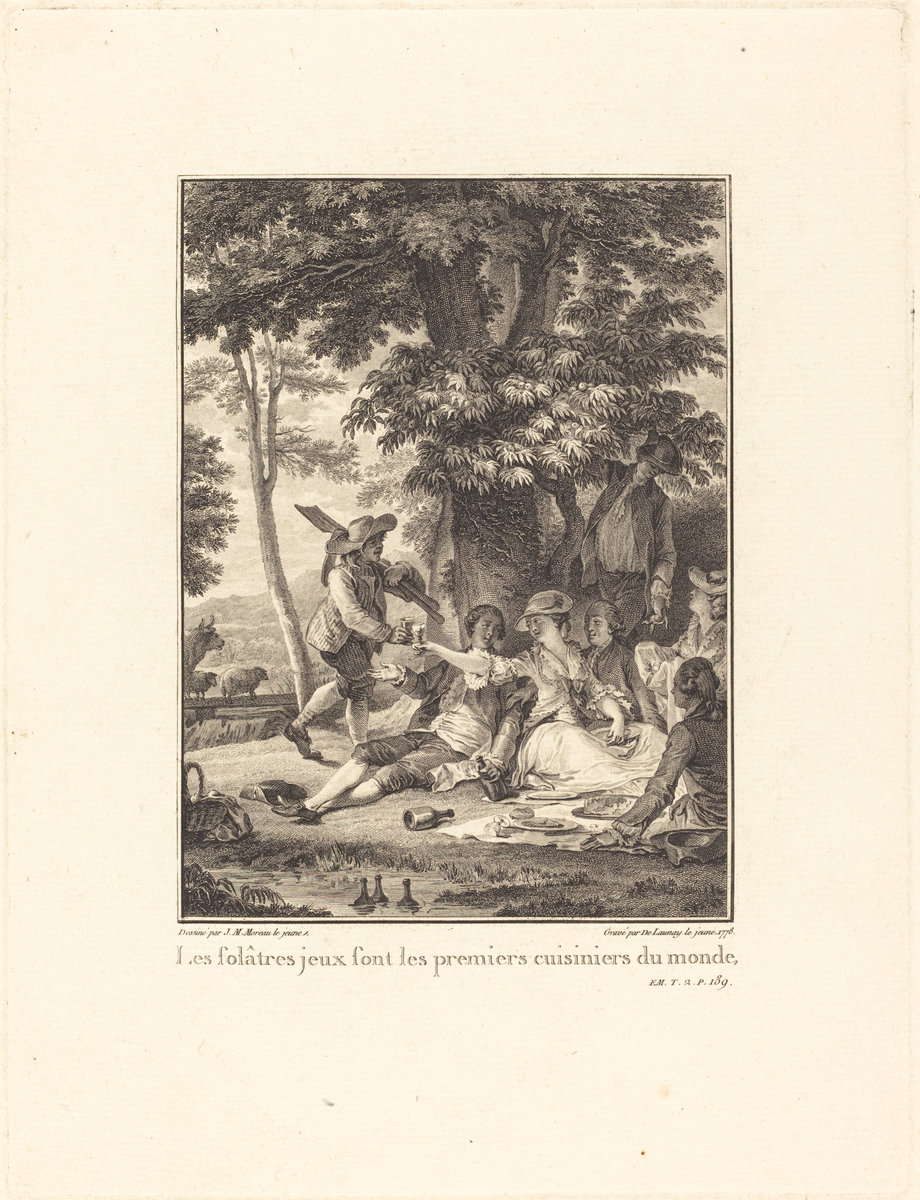 Rousseau was not thinking of a pique-nique when he wrote, “The turf will be our chairs and table, the banks of the stream our side-board, and our dessert is hanging on the trees.” He knew that pique-nique was an indoor meal for which friends shared the...
Rousseau was not thinking of a pique-nique when he wrote, “The turf will be our chairs and table, the banks of the stream our side-board, and our dessert is hanging on the trees.” He knew that pique-nique was an indoor meal for which friends shared the...
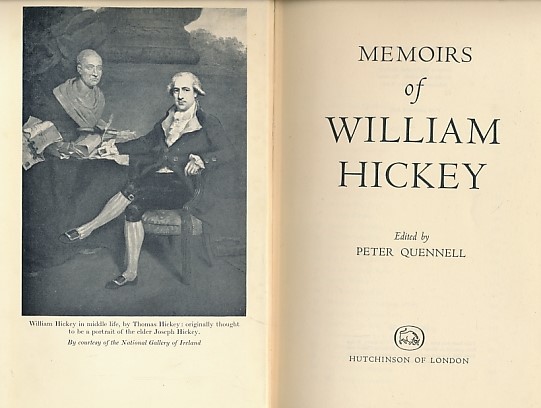 Hickey’s Memoirs included a picnic luncheon in Westminster Abbey during the coronation of George III in September 1762. His memory of the coronation is humorous if it’s true. Many of Hickey’s memories are lascivious, and he was regarded as a rake....
Hickey’s Memoirs included a picnic luncheon in Westminster Abbey during the coronation of George III in September 1762. His memory of the coronation is humorous if it’s true. Many of Hickey’s memories are lascivious, and he was regarded as a rake....
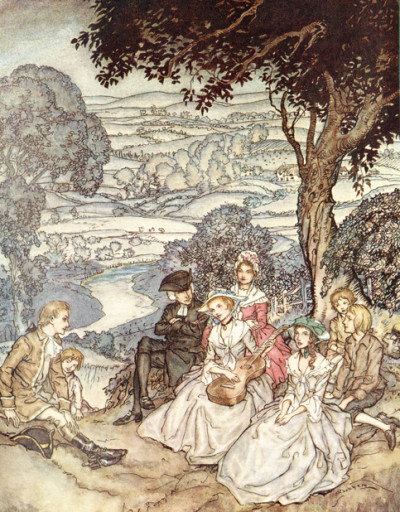 Goldsmith does not use the word picnic, but two such episodes in The Vicar of Wakefield exist. They are so obvious that in English Picnics, Georgina Battiscombe credits with the first “picnics” in English literature. If only he had used the word! Goldsmith...
Goldsmith does not use the word picnic, but two such episodes in The Vicar of Wakefield exist. They are so obvious that in English Picnics, Georgina Battiscombe credits with the first “picnics” in English literature. If only he had used the word! Goldsmith...
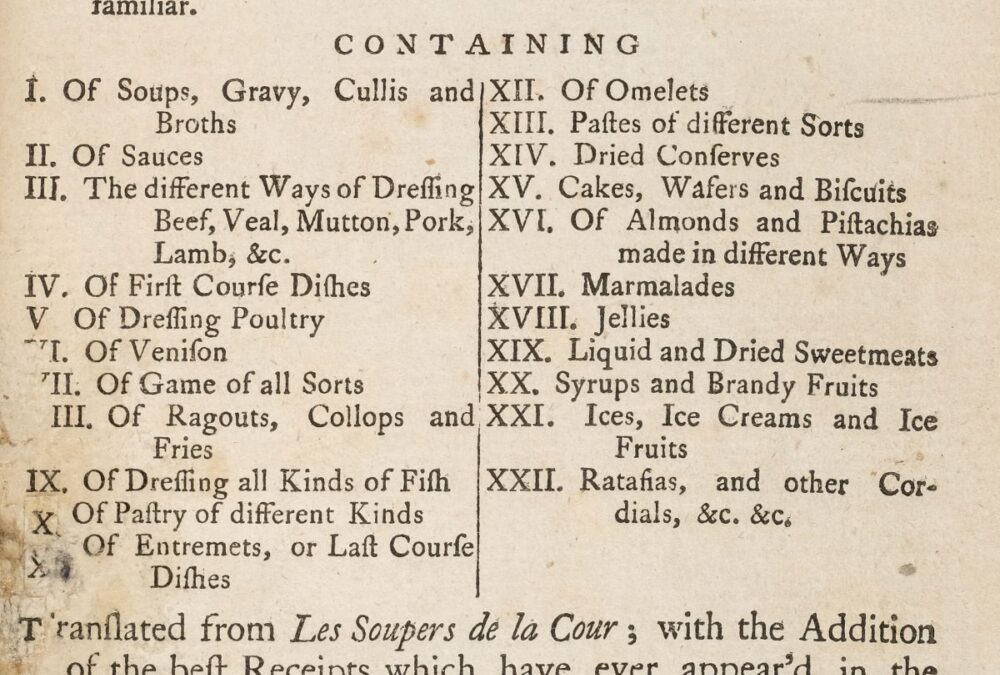 Among Clermont’s recommendations for traveling is a cold Perigord pie. It’s an expensive food ordinary folks might not afford, but a favorite of the posh Pic Nic Club of London. clermont’s text is a translation of Menon’s 1755 Soupers de la cour. Pâté de...
Among Clermont’s recommendations for traveling is a cold Perigord pie. It’s an expensive food ordinary folks might not afford, but a favorite of the posh Pic Nic Club of London. clermont’s text is a translation of Menon’s 1755 Soupers de la cour. Pâté de...











